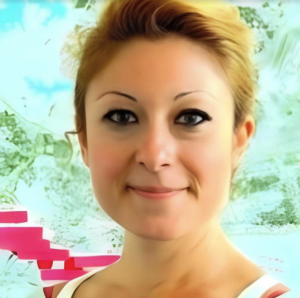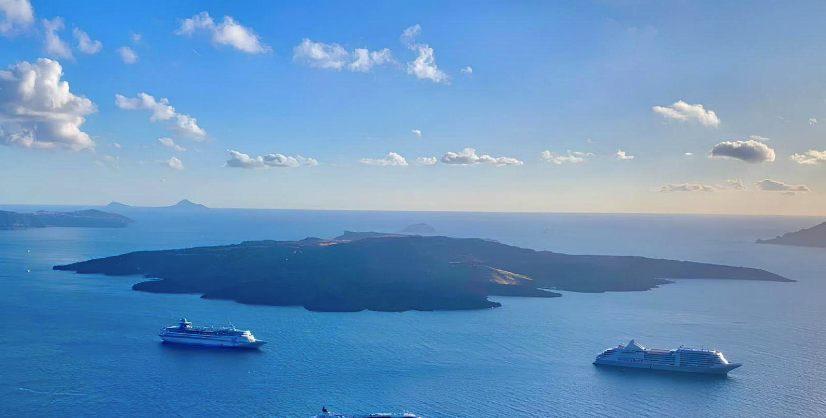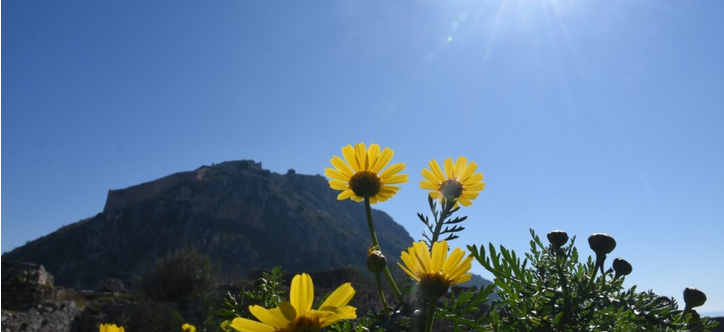Smart Sustainable Coastal Cities and ‘Blue’ Development Strategies for the Marine Environment and Shipping aims to address global sustainability and public health challenges in cities, coastal areas, marine ecosystems, and marine environments.
It presents a unique combination of new ideas, expertise, and research results in related fields such as naval architecture, shipbuilding, biomedicine with related informatics, public health, building physics, nanotechnology, as well as ecology and innovation.
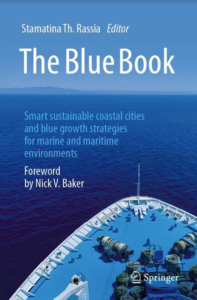
It consists of 12 chapters written by eminent researchers and practitioners from Australia, China, Israel, Luxembourg, Germany, France, Portugal, Malta, Italy, Cyprus, Bangladesh, Germany, Portugal, Malta, Italy, and Greece.
Some chapters include research results recently produced as part of a new pioneering EU project called “Healthy Ship 4U” (GA: 101069937). Among other chapters.
For the first time, this International House, which is one of the 2 largest in the world, puts the colors of the Aegean Sea on the cover of its blue book, in order to raise awareness in the international community of the great need we have globally to protect the sustainability of the seas and shipping as well as public health inside ships and more specifically cruise ships.
The pandemic has highlighted the need to make changes in the design of cruise ships to prevent viruses and germs from spreading and infecting thousands of people on board.
Sick Ships
A discussion of historical cases and optimization for the future by Stamatina T. Rassia and Thodoris Emm. Tsiki, Shipbuilder, mentioned that in ships, the spread of fatal diseases has been associated with certain historical incidents that made the ships themselves, some centuries ago, fatal.
These have led to a change in the way blue development and strategy are planned and investigated.
Interestingly, the term “quarantine” and its associated meaning (40 days of isolation), date back to the 14th century and were originally used for ships.
Specifically, it refers to the mitigation of disease transmission from ship crew and passengers in landing areas.
Ships, crews, passengers, and cargo were isolated from their next destination to prevent the spread of fatal diseases to coastal areas and back to the ship.
While famous classification societies did not exist in the 14th century, the value of public health and safety has been the subject of interest ever since and so ship design and management have been established ever since.
Today, international classification societies have strict prescribed regulations and protocols to ensure health and safety at sea.
But the need persists to this day to identify new methods of preventing disease transmission on board ships and then on the next voyage.
The COVID-19 outbreak has highlighted this imperative since ‘quarantine’ appears to remain the main modern method of preventing virus spread within large vessels such as cruise ships.
The authors, therefore, aim for the shipping and ship design industry to contribute to initiating a debate on optimizing the internal design of ships.
The book is introduced by the internationally renowned Building Physicist Dr. Nick V. Baker Professor currently at the AA (Architectural Association) in London, who writes:
“The themes of this book fit neatly into a Venn diagram of three circles – the ocean, the shore, and the ship.
Setting the broader geographical context, where shipping, ocean ecology is examined, and impacts ranging from the carbon emissions of the global shipping fleet to the effect of ship propeller noise on whale communications are described.
The authors of the book clearly show that shipping will continue to be the main method of transport, and indeed they anticipate growth.
However, although the carbon efficiency of maritime carbon emissions may improve due to technical advances, including electrification, it should not be forgotten that this demand for maritime transport is largely fueled by the consumption of goods for which production from the East is largely responsible, which ultimately contributes to global emissions.
In this book, there is a real discussion of how the predictable daily sea breezes affect the overheating of urban centers.
These could be taken into account for indoor and outdoor ventilation design since they exist and have a strong historical precedent in coastal cities.
Motivated by the recent COVID-19 pandemic, (see e.g. the story of the Diamond Princess cruise ship with 3500 passengers and crew quarantined for 2 weeks off the Japanese coast), the emphasis of this book is undoubtedly on passenger health, particularly on cruise ships.
The impact on the cruise industry is huge, and this has generated intense research interest at the European level – as typified by the EU-funded Healthy Ship 4 U (HS4U) project.
To me, as a building scientist who used to be concerned with the health and well-being of building occupants, the thought that there might be many thousands of people in close proximity, in a deep multi-storey steel ‘building’ with severe restrictions on freedom of movement, access to light and fresh air (since ventilation is often fully mechanically supported), sounds like a recipe for disaster.
The fact that they all eat food from a common kitchen, meet for food and entertainment, and then are released by the thousands every few days to go ashore and interact with another population seems to ensure this disaster.
Many chapters in this book deal with this issue, and in all cases, solutions are sought in detection, management, and mitigation by engineering and information systems, and for the design of the ship itself.
As expected, IT plays an ever-increasing role in the proposed solutions. Disease detectors are discussed at length, and it may be surprising for the uninitiated to learn that a passenger’s risk of having COVID can be detected by analyzing an audio file in their cabin, their sneezing and coughing habits. Other sensors even invade the toilet, but it is reassuring to know that it will be “heard” by the AI and not the doctor!
That’s not where this book stops though. The next step described is to apply the data to mathematical models of cross-contamination within the ship, to predict the risk and then test various management interventions.
Finally, in the more ambitious proposals, the system could carry out certain responses (e.g., change ventilation strategy, close areas, trigger warnings, etc.) automatically.
It is interesting to note that many of the cross-contamination problems identified on cruise ships could be present on residential ships – particularly in the case of refugee/asylum seeker accommodation which is usually at very high density.
Lemnos: Issues arise due to severe weather – Power outages in several areas
It is also worth noting that in the UK the purpose-built asylum seeker barge, the Bibby Stockholm, moored in Portland Harbor UK to accommodate 500 people, was closed within days of initial occupation for a variety of reasons including fire, safety and risk of contamination.
On that health issue – one last irony.
The historical precedent for this concern for the health of ship ‘passengers’ was in the 18th century – the provision of ventilation on slave ships – not out of concern for the poor slaves but rather as a way of ensuring valuable ‘cargo’ ‘survived’ and in good condition for resale.
So, after reading the book, I am in a position to speculate about the ‘Blue Future’.
I am concerned that the anticipated future of shipping presupposes the ever-increasing growth of trade and ship movements.
Human presence on land is already well beyond any ecological limit, and is already threatening the oceans.
I would prefer a much gentler future, with a gradual reduction in the transport of essential low-value goods or carbon-emitting oil, around the world.
On the other hand, the return of passengers to shorter voyages, (for which the strength of the cruise industry suggests growing demand), could mean that sea travel once again becomes an enriching experience for many and an opportunity for them to experience true wonder.
Continuing my dream, I think ships will have to get smaller again, perhaps combining basic cargo carrying with passengers and their reduced size allowing for much simpler approaches to environmental regulation, (more akin to passive design found in low energy buildings) and two resources that are freely available at sea are wind and sun.
So a combination of sails, photovoltaics and turbines, with battery storage would power ships at energy-efficient speeds, with zero carbon emissions.
Smaller ships have other advantages – they require smaller port facilities, closer to the social center of the city – but would even allow a smart transport system to pick up passengers.
The authors of this book inform a number of key and interrelated issues related to our use of the oceans. Reassuringly, they all point to an environmental goal, whether it is a healthy individual or a healthy planet.” Nick V. Baker.
The “BLUE BOOK was published on February 9, 2024, with content on “smart sustainable coastal cities and blue growth strategies for the marine environment and shipping, published from Springer house.”
About the author:
Matina Rassia is an architectural engineer, a graduate of NTUA, and a PhD from Cambridge University, specialising in architectural design with the aim of promoting public health (epidemiology issues) and preventing chronic diseases such as pancreatic cancer, type B diabetes, heart disease, and others.
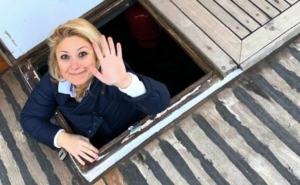
She has international experience in European Projects and work (in Singapore, Switzerland, France, Greece) at ETH Zurich, INSEAD, and elsewhere on Smart Cities and climate change.
